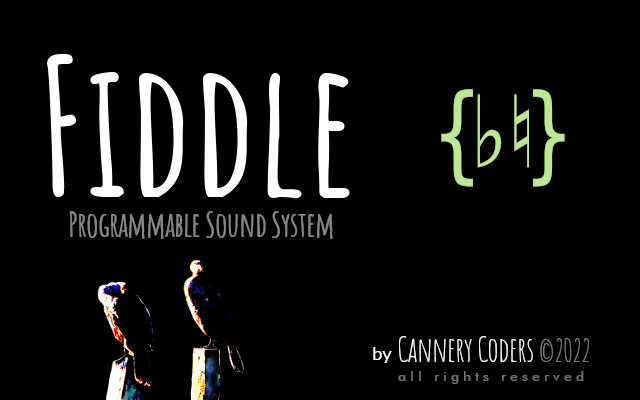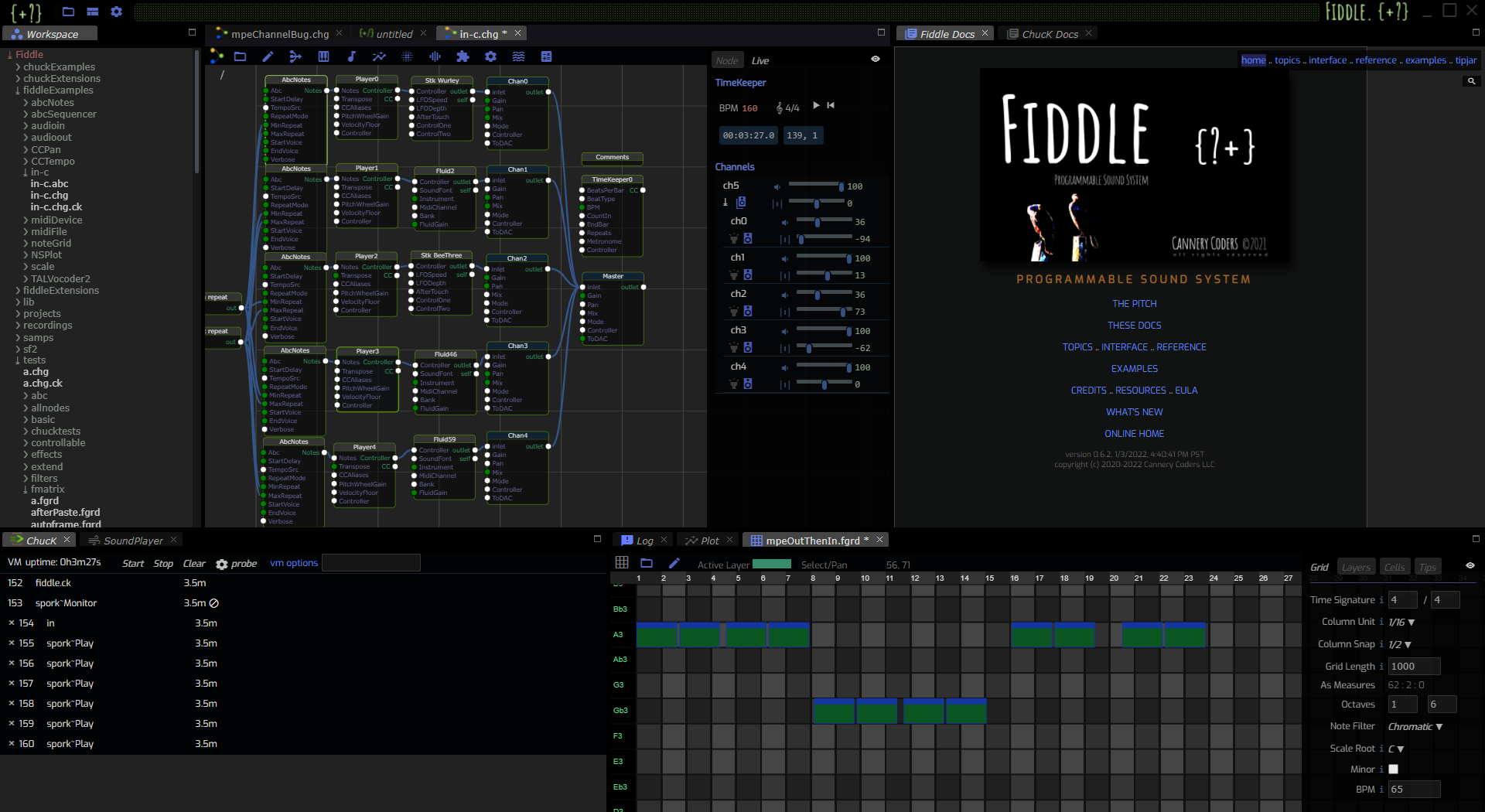
Deprecation Notice
Fiddle has been superceded by Hz!
We're happy for you to keep Fiddlin' though!
Programmable Sound System
Fiddle is an easy-to-use graphical environment for making music with ChucK. Fiddle is available for late-model MacOS, Windows and Linux computers and includes a collection of interactive tools for fiddling with sound, creating sound snippets, soundscapes, or full-blown compositions.
If you've been thinking of fiddling with programmable music production, Fiddle's gentle learning curve and complete but extensible toolkit and low pricetag (it's free) may be just for you!
And if you haven't heard of ChucK, that's no problem. It's a powerful, free, open-source sound engine from Princeton and Stanford Universities that can be programmed to produce any sound you can imagine.
Fiddle and ChucK combine to make a powerful, easy-to-use, programming-optional, DAW. If you've heard of SuperCollider, Pure Data, or Sonic Pi we think you'll find Fiddle + ChucK an interesting comparison. Similarly, if you are an Ableton, Reaper, Cubase or Logic enthusiast, we think you may find that Fiddle can play a useful role as a companion to your primary-DAW workflows.

Fiddle offers a hybrid of flow-based and text-based control. You create a musical composition out of a collection of high-level Nodes, wired together into a Graph. Some nodes represent synthesizers while others represent pattern generators, effects pipelines or even MIDI devices. High-level Nodes are used to represent audio and control signal flow. But the real kicker is that the system is completely extensible. Nodes are open source and written in a combination of chuck and yaml. Fiddle users can extend the factory node library on a per-project basis. Fiddle also supports many VST3 plug-ins so you may be able to fiddle with integrating a programmable sound system into your workflows.
Fiddle is offered completely unlocked and free-of-charge. If you find our software useful and wish to encourage further development, please contribute. Your support is appreciated! Our tipjar is always open.
So what are you waiting for?
- Proceed directly to the Download Page
- or Peruse the online documentation
